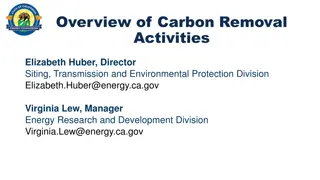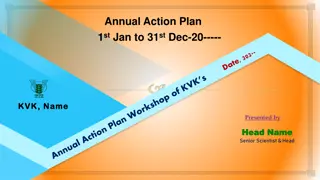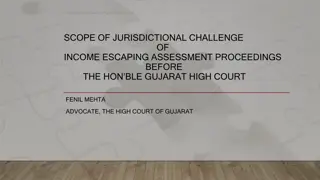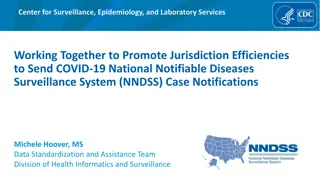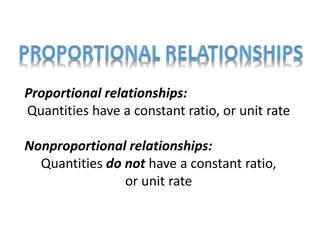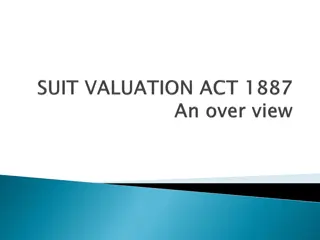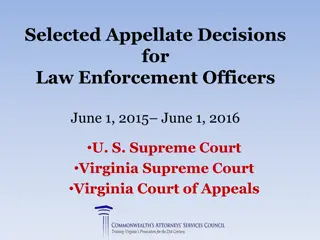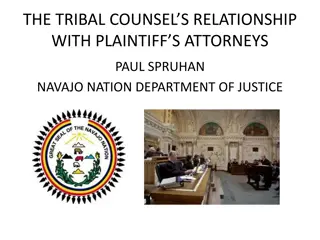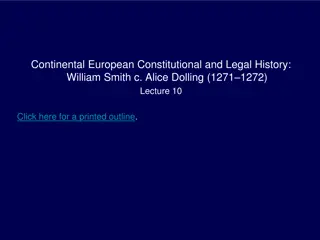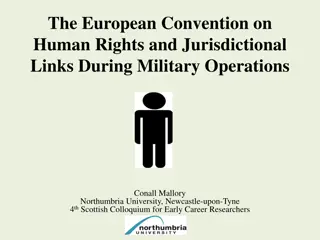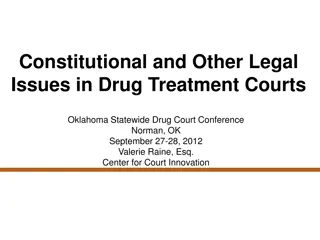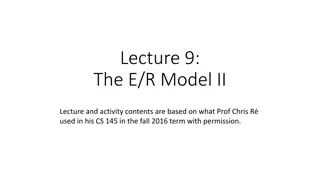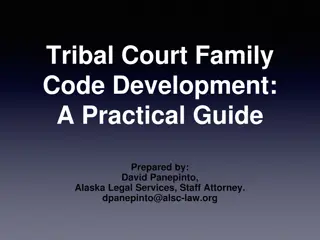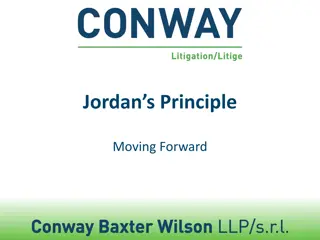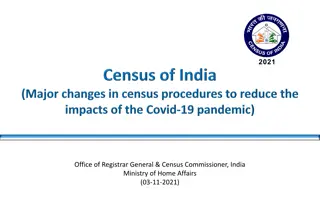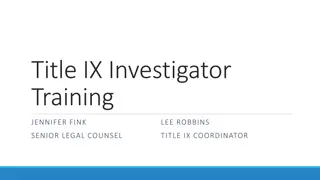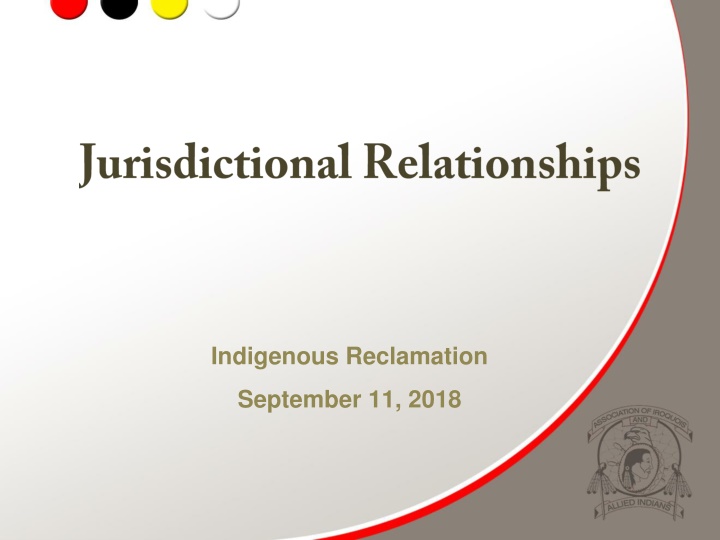
Empowering Indigenous Voices for Decolonization and Reconciliation
Embrace First Nations leadership in decolonization efforts, establish new principles for Indigenous-Crown relations, and halt oppressive colonial structures to advance mutual understanding and implementation of UNDRIP. Call on Canada to honor treaty agreements and engage in Nation-to-Nation dialogues guided by Indigenous communities. Join the movement for justice and reconciliation today.
Download Presentation

Please find below an Image/Link to download the presentation.
The content on the website is provided AS IS for your information and personal use only. It may not be sold, licensed, or shared on other websites without obtaining consent from the author. If you encounter any issues during the download, it is possible that the publisher has removed the file from their server.
You are allowed to download the files provided on this website for personal or commercial use, subject to the condition that they are used lawfully. All files are the property of their respective owners.
The content on the website is provided AS IS for your information and personal use only. It may not be sold, licensed, or shared on other websites without obtaining consent from the author.
E N D
Presentation Transcript
Indigenous Reclamation September 11, 2018
1. Confirm that only First Nations can determine the path to decolonization and reconciliation. 2. Establish a First Nations led process to draft a New Royal Proclamation binding on the Crown in right of Canada and all of the provinces and territories. 3. Call on Canada to set-aside its Principles Respecting the Government of Canada s Relationship with Indigenous Peoples (Ten Principles) as the basis of the relationship moving forward.
4. Halt the Recognition and Implementation of Rights process going forward and insist that Canada participates in a First Nation-led negotiations to mutually establish principles to observe and implement the UNDRIP, including a joint action plan for such implementation. 5. Call on Canada to confirm it is committed to an independent international arbitrator to resolve disputes between Treaty partners and within the Nation-to-Nation relationship. 6. Call on Canada to immediately convene a meeting with First Nations to discuss this issue.
1. Confirm that only First Nations can determine the path to decolonization and reconciliation. When Canada and the Crown began refusing to adhere to the principles and terms of the treaties faithfully negotiated with First Peoples and Nations, an oppressive and colonial regime emerged. Canada and the Crown cannot determine the processes for repairing the damage done to First Peoples and Nations. Canada continues to operate within two-hundred year old structures and ideologies that see and treaty First Peoples and Nations as inferior. First Peoples and Nations have the capacity and capability to lead the processes of decolonization.
2. Establish a First Nations led process to draft a New Royal Proclamation binding on the Crown in right of Canada and all of the provinces and territories. 3. Call on Canada to set-aside its Principles Respecting the Government of Canada s Relationship with Indigenous Peoples (Ten Principles) as the basis of the relationship moving forward. New joint principles of understanding must be developed bilaterally with First Nations and Canada s Ten Principles document must be set aside. Canada has a duty, based on the honour of the Crown, to negotiate with First Nations on mutually agreeable terms.
4. Halt the Recognition and Implementation of Rights process going forward and insist that Canada participates in a First Nation-led negotiations to mutually establish principles to observe and implement the UNDRIP, including a joint action plan for such implementation. The Framework process has been halted and cannot begin again without a vote at the AFN SCA
5. Call on Canada to confirm it is committed to an independent international arbitrator to resolve disputes between Treaty partners and within the Nation-to-Nation relationship. Conflicts between First Peoples and Nations and Canada, which are international in nature, are decided by domestic law. This process is fundamentally unjust as it forces First Peoples and Nations into the courts of their colonizer. Any third-party led mechanism must be empowered with all the tools necessary to achieve a fair resolution. These tools include, but are not limited to: funding for research, the authority to compel parties to come to the table and, when agreed to by both parties, binding arbitration.
6. Call on Canada to immediately convene a meeting with First Nations to discuss this issue. This meeting is not consultation. This is the First Indigenous-Crown relations meeting of the Federal Framework process. This is the way these discussion should have began.
Rooted in notion of Crown Sovereignty Based on S. 91 (24) of the Canadian Constitution Act, which gives the federal government exclusive authority over Indians and lands reserved for Indians. Canada s version of inherent rights are legally enforceable under Crown authority using S. 35 of the Canadian Constitution Act, 1982. Rights are defined by Crown institutions and laws. Crown holds jurisdictional authority and may delegate or give authority to First Nations to exercise power in certain areas. (ie. land co-management agreements)
Crown Sovereignty Indigenous Jurisdiction Federal Jurisdiction Provincial Jurisdiction
This solution has been proposed since the Constitutional discussions of the early 1980s Consideration was given only with First Nations occupying field with inherent jurisdiction What is being proposed under this model is not a stand-alone government, rather, all jurisdiction is delegated
Indigenous Jurisdiction Federal Jurisdiction Indig-Fed Indig-Prov Fed-prov Provincial Jurisdiction Trilateral agreements
Another possible model to consider In this model, it is clear that First Peoples and Nations have jurisdiction not delegated from the Federal Government
Indigenous Nation Sovereignty Crown Sovereignty Treaty Crown Jurisdiction Indigenous Jurisdiction Intergovernmental Agreements
This is the original Treaty relationship model It has never been extinguished, and may provide the basis for a renewed relationship with Canada
Treaties as International Instruments Peace and Security Diplomacy and International Relations Trade and Commerce Sovereign Canadian State Indigenous Nations Non-Interference Obligations Consent Land Sharing Breaches Dispute Resolution Mechanisms
Treaties as the Basis of a New Relationship UN Treaty Study: 194. However, to legitimize beyond any doubt the ways and means used to take issues that originally belonged to the realm of international law away from it and to justify making them subject solely to domestic legislation unilaterally passed by the States and adjudicated by domestic non-indigenous courts, States should produce unassailable proof that the Indigenous peoples in question have expressly and of their own free will renounced their sovereign attributes. There is not unassailable proof that we have consented to give up our jurisdiction, ceded our lands, or domesticate our treaties
Engagement and consultation are one-sided power games where First Nations can never win any new relationship must be based on consent The relationship between First Nations and Canada must be governed by international law Our right to self-determination already exists and is evidenced by the UN Covenant on Civil and Political Rights, which states that all peoples have the right to self-determination, and to which Canada is a signatory United Nations Declaration on the Rights of Indigenous Peoples UNDRIP reaffirms our right to self-determination The floor, not the ceiling UNDRIP can be used as a toolbox, but not a recipe
As Indigenous People, we are prepared to look at the standards that are available to us. 1. Treaty Standard 2. UNDRIP as the floor, not the ceiling We have yet to hear what Canada s standard is.

